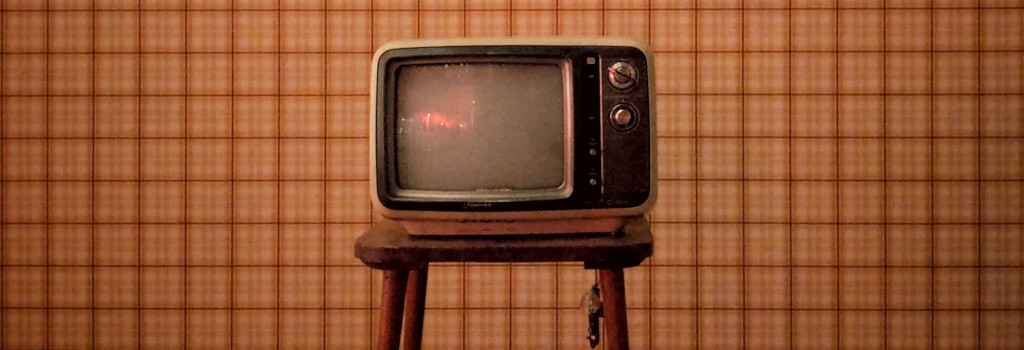
We’ve all seen advertisements on TV interrupting the nail-biting moment in Jeopardy, during drinks breaks in tense sports matches (third Ashes test, anyone?), and even breaking up a re-run of our favourite James Bond film (The Spy Who Loved Me is a personal favourite if anyone’s wondering).
TV advertising sometimes makes consumers roll their eyes in frustration, but as B2B spend on TV advertising has doubled since 2018, more businesses clearly feel it is worth investing in, leading to a changing of the guard in commercial breaks. Financial services, web hosting services, and other customer service businesses have made the investment in screen time – but what’s driving this change, and how should PR and Marketing pros take advantage?
Our previous blogs have highlighted how B2B and B2C are moving ever closer in social media marketing, but it seems that this isn’t the only place where the shift is occurring. Televisions around the world look set to broadcast more B2B advertising over the next few years, which is certainly a sign of the broadening multichannel approach to B2B Marketing. However, there are clear PR and Marketing opportunities that extend even beyond paid commercial breaks.
Which sectors are splashing out on screen?
Despite TV advertising investment only increasing by 3%, there has been a 112% increase in B2B TV ad spend since 2017, with a significant amount of growth being driven by the consumerization of complex technology solutions. Today, tech-native customers are more comfortable dealing with software such as web design tools, accounting software, domain registration and mobile-based payments.
The likes of Intuit (30% increased spend), Ionos (194% increased spend), and Natwest (391% increased spend) have all invested heavily in TV advertising, but what are some B2B benefits of boosting coverage?
Increase brand exposure and trust with TV advertising
It’s no secret that investing in TV advertising can rapidly increase brand exposure, and this will only become more critical as video becomes a popular medium. HubSpot estimates that the number of digital video viewers worldwide will hit 3.5 billion in 2023 as people are watching 17 hours of online videos a week – capture just 5 minutes of that time and watch brand reputation grow.
TV adverts provide a lucrative opportunity to build trusting relationships with prospective buyers – it seems that 35% of consumers find advertising they trust on TV. For businesses where customer service is integral, advertising can add an extra layer on top of print and digital media. Be in spaces comfortable for customers, such as their living rooms, and they naturally will become more comfortable with your brand.
Fill the growing service gap
We’ve talked about the mere-exposure effect before, but providing customers with increased brand exposure can stimulate positive memory recall in prospective customers, even if their initial familiarity is subconscious. This powerful technique can be vital, especially at a time when 57% of customers feel service has got worse in the last year.
Businesses don’t always have to pay to gain video exposure and consumer trust
At IBA, we’re true believers that you don’t always have to pay-to-play. Video content marketing on earned and owned channels is a good avenue for businesses to improve brand awareness and trust without breaking the bank. With the proliferation of shorter form video content has also come an improvement in the quality of longer form content, and an increase in the places it can be hosted. YouTube channels, websites, twitch streams – the locations are many, and often able to cater to exactly what a B2B company requires.
The proof is there! The IBA team recently secured an opportunity for our data movement client to speak on the key criteria for choosing an event broker with a top tech media outlet in North America. This appearance on a web TV channel geared towards prospective buyer’s interests, helped our client successfully target the bottom of the sales funnel at a critical point to increase brand awareness.
Earned TV opportunities can have a transformative impact on brand reputation, but businesses need to ensure their TV strategy is optimized for the best results. A recent Roxhill Media webinar attended by the IBA team gave a rundown on three key areas where businesses can maximize their screen time:
- Plan ahead
‘Plan, plan and plan again’ is the motto where TV pitching is concerned – especially who to target. Unlike print media, which is typically controlled by an Editor-in-Chief and their sub-editorial team, TV editors operate on a rotational basis, receive less queries than their print counterparts, and often have a specific niche. Building relationships with all editors on a program is important to avoid slipping through the net of rota changes, and to appeal to the interests of special correspondents.
These editors safeguard their interests and will receive a limited number of queries on their subjects, so identify the right one and capture their imagination to get your spokesperson or topic some screen time.
- Select the best spokesperson for the job
Gaining the opportunity to speak on screen is only the first step! It’s important to ensure that your brand representatives are confident and comfortable with speaking to a large audience live, fielding questions from a host, audience, or panel of subject matter experts, and knowledgeable about your business.
Sometimes the suits of a company might not be the right person for the job. Find a charismatic employee immersed in the day-to-day workings of your business to work their magic on camera, and you’ve found yourself the right spokesperson for the job! Ultimately, there’s no right or wrong way to select your speaker, but hierarchy shouldn’t always matter.
Positive, passionate workers with interesting testimonies can add authenticity to your brand image – just make sure they are appropriately briefed on the disciplines involved and the facts required to convey your messaging.
- Make the subject interesting and applicable for TV – have a B-Roll at the ready
TV reporting moves faster than any other medium. Embargoes are rarely adhered to, newsjacking doesn’t always apply, and editors value B-roll to illustrate your story and fill in the gaps that production crews can’t.
It is valuable to have stock footage handy – anything from footage of your technology working on the factory floor to employees enjoying lunch in the canteen is useful and can help editors visualise the full picture.
Paid TV advertising is increasing in popularity, but earned media remains king
Paid TV advertising may be on an upward trend, especially within the B2B sector but there’s no doubt that earned media remains pivotal to any PR and Marketing strategy. As our data movement client demonstrates, if you crack the code to earn coverage opportunities – from adverts to talking head interviews, and even roundtable discussions – the glass ceiling for brand growth and customer retention can be smashed.
And to circle back to Bond, earned media is our speciality – for ‘nobody does it better’ than IBA…
Thomas Wrath is PR Executive at IBA International.

Leave a comment